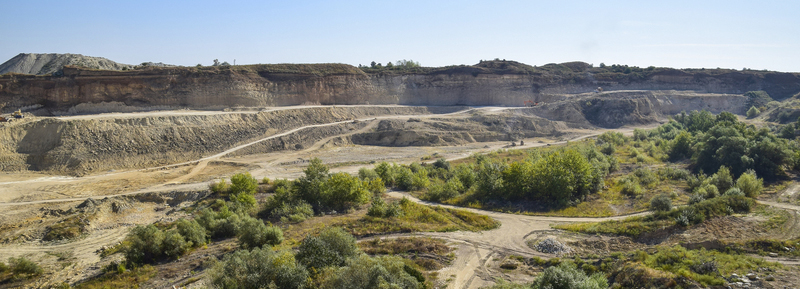Obtaining
Environmental Insurance:
Three Areas for
Negotiation
The
environmental insurance marketplace has evolved over the decades it has been in
existence. Our experience over the last few years shows that the market is
active, with carriers willing to be innovative in order to remain competitive.
Because environmental policies are written on a manuscript basis, meaning the
policy is written on a custom basis to include coverage or conditions not
included in a standard policy, policyholders have an opportunity through
negotiation to obtain the best policy possible to suit their needs. The
following are three areas where we are seeing flexibility and creativity in the
carrier’s underwriting that address our client’s specific needs.
Known Pollution Conditions – Pollution policies generally
do not cover cleanup costs for conditions known at the time the policy is
issued. How these known conditions are defined in the policy is critical to the
scope of coverage provided. Accordingly, working with the underwriter so that
the policy defines known conditions as narrowly as possible is worth the
effort. Toward this end, providing the underwriter with a detailed summary or
chart outlining each known condition, its location on the property, the media
impacted (e.g., soil or groundwater) and the specific contaminants
identified is particularly helpful in negotiating this aspect of the policy.
Coverage for Conditions Discovered During Redevelopment – Many
environmental insurance policies contain an exclusion for contamination
discovered when demolishing existing structures or during the course of capital
improvements. Thus, for clients who are purchasing (or selling) property for
redevelopment, this exclusion may effectively operate to bar coverage. While
subject to more underwriting scrutiny, we have had success in limiting the
exclusion to contaminants found in building materials rather than a broad
exclusion for any contamination discovered during redevelopment. Carriers also
are willing to entertain providing coverage for contamination discovered during
redevelopment if such a claim is subject to a deductible or self-insured
retention that is higher than for other coverages afforded by the policy.
Named Insureds and Additional Insureds –
Insurance is often purchased in order to allocate risk between parties to a
real estate transaction. These transactions involve multiple parties, each with
their own interests (e.g., the buyer and the seller and their
affiliates, as well as even potential future owners of a property that is being
redeveloped). These parties all generally want to have the benefits of coverage
under the policy. Not all parties, however, should have or are entitled to the
same coverage. Accordingly, it is important to carefully consider which
entities receive the broadest rights under the policies (typically referred to
as a “named insured”) and which parties have other insured status (typical
referred to as an “additional insured”). This issue is further complicated by
the fact that not all policies define a “named insured” and an “additional
insured” in the same way. Accordingly, it is important to understand the
rights, duties and privileges provided by the policy to each category of defined
insureds to ensure proper coverage is extended to the appropriate parties. This
may involve discussions with the underwriter about the interests of each party.
Procuring appropriate insurance can make the difference in whether
a deal is done. Accordingly, best practice includes consulting with
professionals experienced in procuring coverage (including both brokers and
attorneys) to identify which carriers have an appetite and are willing to be
creative in their underwriting to meet the needs of the deal as well as to
negotiate with the carrier to develop policy terms that cover the risks for
which the insurance is purchased.
For more information, please contact the author Alexa Richman-La Londe at alalonde@riker.com or any attorney in our Environmental Practice Group.
Recent
Third Circuit Decisions Help Define
Contours of CERCLA
Liability
The United
States Court of Appeals for the Third Circuit recently handed down two
noteworthy decisions on environmental liability under the Comprehensive
Environmental Response, Compensation and Liability Act (“CERCLA”). One involves
the appropriate methodology for allocation of cleanup costs between two
responsible parties based on equitable factors; the other involves whether a
new owner of contaminated property is responsible for governmental response
costs incurred prior to its purchase of the relevant property. Both set new
precedent that should be of interest to the regulated community.
Equitable Allocation Methodology
In a relatively rare occurrence, the Third Circuit issued an
opinion on allocation of environmental liability between successive landowners
pursuant to CERCLA, and, even more surprising, the Third Circuit rejected the
allocation methodology used by the District Court. Trinity Industries, Inc.
v. Greenlease Holding Co., 903 F.3d 333 (3d Cir. 2018). The Third Circuit’s
decision provides important guidance on the proper methodologies for equitable
cost allocation. According to the decision, while precise calculations are not
required, allocation methodology cannot be speculative. Further, the Third
Circuit’s decision disfavors a strict volumetric approach to allocation except
in straightforward cases where, for example, there is only one contaminant
being addressed using one remedial technique.
Trinity Industries, Inc. (“Trinity”) brought a contribution action
against the prior owner and operator of a railcar manufacturing plant,
Greenlease Holding Co. (“Greenlease”), for approximately $9,000,000 in
remediation costs Trinity incurred at the property. Both parties used the
parcel for painting railcars with lead paint and other toxic chemicals. Greenlease
owned and operated the parcel from 1910 until 1986, when Trinity purchased the
parcel. Trinity operated until 2000.
After a bench trial regarding the equitable allocation of
remediation costs, the District Court rejected both parties’ asserted allocations
(Trinity’s expert allocated 99% of the costs to Greenlease and Greenlease’s
expert allocated 88% to Trinity) and conducted its own analysis. The District
Court devised a formula to attribute the remediation costs by multiplying the
percentage of responsibility allocated to each party by either the square
footage or cubic yardage for each remediation activity undertaken at 45
different “impact areas.” The District Court then added the results and divided
by the total square footage or cubic yardage for all remediation activities to
find that Greenlease’s overall cost allocation percentage was 83%. The District
Court then reduced this number relying on three equitable factors: 1) that
Trinity did not account for a subsequent purchaser’s actions, which allegedly
caused contamination; 2) that, in their contract of sale, Trinity and
Greenlease intended to shift some liability to Trinity; and 3) that remediation
increased the value of the property. As a result, the District Court reduced
Greenlease’s liability to 62% of the remediation costs. Both parties appealed.
Finding the District Court’s methodology “arbitrary” and
“speculative,” the Third Circuit found the District Court abused its discretion
in allocating responsibility based upon the quantities of contaminants in each
impact area without regard for the actual costs each party was responsible for
causing. Failing to account for the costs associated with different remedial
activities employed (e.g., placing asphalt caps vs. placing topsoil) or
different contaminants at issue “leads to an allocation that is inequitable
because it is divorced from the record evidence and analytically unsound.”
Compounding the initial error, when determining the quantities of contamination
attributable to each party, the District Court erroneously treated square feet
(units of area) as equivalent to cubic yards (units of volume). Rather, under
the Third Circuit’s guidance an appropriate methodology should use volumetric
and cost data specific to each remediation activity to determine how much of
that activity each party is responsible for. Once a determination is made for
each remediation activity, the respective shares can be added together to
calculate an overall percentage.
While the Third Circuit has not adopted a standard allocation
methodology appropriate for all facts and circumstances, its decision provides
sound considerations and guideposts for parties who will be putting forth
allocation arguments in their own cases.
Owner Liability for Pre-Ownership Response Costs
In a second recent decision, the Third Circuit again overturned
the District Court in determining the costs a current owner is liable for under
CERCLA. Pennsylvania Department of Environmental Protection v. Trainer
Custom Chemical, LLC, 906 F.3d 85 (3d Cir. 2018). Trainer Custom Chemical,
LLC (“Trainer”) purchased a former chemical manufacturing site at a tax sale
for $20,000. The property, however, had been contaminated and, while the
remedial action was essentially complete at the time Trainer purchased the
property, the prior owner had defaulted on its environmental obligations,
causing the Pennsylvania Department of Environmental Protection (“PADEP”) to
have spent over $800,000 in remediation costs at the property prior to the tax
sale. After the transfer of the property, Trainer was alleged to have caused
new contamination at the property, again requiring the PADEP to incur costs.
PADEP sued Trainer seeking recovery of all of its pre- and post-acquisition
remediation costs.
The District Court drew a temporal line and ruled that Trainer was
only liable for response costs PADEP incurred after Trainer became the owner of
the property. In reaching its holding, the District Court relied on a Ninth
Circuit decision that found that whether a party is an “owner” under Section
107 of CERCLA is measured at the time of cleanup. The Third Circuit, however,
looked to the statutory language of CERCLA that holds a current property owner
liable for “all costs” incurred to remediate property. Accordingly, the Third
Circuit found that CERCLA does not draw a temporal line and that “all costs”
means “all” costs regardless of the timing of property ownership.
This decision highlights the need for pre-acquisition due
diligence not only to determine the potential responsibility to remediate
contamination caused by prior owners, but also whether the government has
unreimbursed costs for which a new owner may become responsible. Further, while
Trainer did not assert the innocent or bona fide purchaser defense, these
defenses as well as divisibility and apportionment may limit a current owner’s
liability for “all costs” including pre-acquisition response costs.
For more information, please contact the author Alexa Richman-La Londe at alalonde@riker.com or any attorney in our Environmental Practice Group.
New
Jersey Takes Aim at
PFAS and Chemical
Manufacturers
In a move
that has assuredly grabbed the attention of the regulated community, the New
Jersey Department of Environmental Protection (“NJDEP”) recently commenced two
major initiatives in an effort to further address the emerging, hot-button
issue of poly- and perfluoroalkyl substances (“PFAS”) contamination in the
state. Specifically, on March 13th, the NJDEP established new interim specific
groundwater quality standards for two particular PFAS compounds,
perfluorooctanoic acid (“PFOA”) and perfluorooctanesulfonic acid (“PFOS”),
which became effective immediately. Then on March 25th, the NJDEP issued a
directive to five chemical manufacturing companies that it believes are the
primary source of widespread PFAS contamination in New Jersey. The directive
requires these companies to provide a detailed accounting of their historical
use and discharge of PFAS and notifies them that the State will hold them
financially responsible for costs associated with the investigation and
remediation of PFAS contamination for which they are responsible. A few days
later on March 27th, the NJDEP filed a suit against certain of these chemical
companies seeking cleanup and removal costs and damages for injuries to natural
resources. With these new initiatives, New Jersey continues to be one of the
states at the forefront of investigating and regulating PFAS chemicals. (To see
how New York is handling PFAS, see our March 4, 2019 Blog Article New York Expands
Requirement To Investigate Emerging Contaminants.)
Significantly, in conjunction with establishing the new interim
specific groundwater standards for PFOA and PFOS, both set at 0.01 micrograms
per liter (ug/L) or 10 parts per trillion (ppt), the NJDEP issued a guidance
document mandating that all remediating parties are required to evaluate the
potential for, and if warranted investigate and remediate, PFOA/PFOS
contamination at their sites. The guidance document also makes clear that this
requirement applies to all active site remediation cases, including those
subject to upcoming regulatory and mandatory timeframes as well as those cases
that received a limited restricted or restricted use response action outcome
(in which case the evaluation must be performed prior to and reported in the
next biennial protectiveness certification). In making this clarification, the
NJDEP recommends that if a remediating party cannot complete the evaluation and
any required investigation and remediation by its applicable timeframes, it
should apply for an extension. Notably, however, if PFOA or PFOS is identified,
a remediating party has the option to report the discharge and create a new
case specifically for the PFOA/PFOS contamination that, going forward, will be
subject to separate timeframes for completion of the remedial investigation and
remedial action.
This new requirement to evaluate and address PFOA/PFOS is likely
to have significant impacts on site remediation cases as well as parties
involved in, or performing due diligence associated with, property and other business
transactions. Parties that may be at the end of their investigation or
remediation may now be forced to go back and address these contaminants at
significant unanticipated cost. While some may question or, in the right case,
may even challenge the enforceability of NJDEP guidance since it was not
promulgated through the Administrative Procedures Act process, it is clear that
the NJDEP is intent on making responsible parties evaluate, and if warranted,
address PFAS contamination at their contaminated sites.
For more information, please contact the author Jaan M. Haus at jhaus@riker.com or any attorney in our Environmental Practice Group.
Environmental
Justice Initiatives Soon May Impact
Permitting and Other
Regulatory Actions
Since
taking office last year, New Jersey Governor Phil Murphy has sought to place
concerns about environmental justice in the foreground of New Jersey’s
regulatory decision-making process. Advocates and policymakers long have
maintained that locally undesirable or polluting land uses disproportionately
are located in low-income, typically urban communities that lack political
influence or sufficient resources to protect their interests. Environmental
justice efforts attempt to respond to this imbalance and, as the NJDEP defines
the concept, aspires that “no one group of people will have a disproportionate
share of negative environmental consequences stemming from industrial,
governmental and commercial operations or policies.” Recently, both the
executive and legislative branches have taken steps to implement new
environmental justice policies. Last year, Governor Murphy issued an Executive
Order and NJDEP distributed a draft guidance document that instruct State
agencies to account for environmental justice concerns in their decision-making
processes. In addition, S1700, a bill imposing additional environmental
permitting requirements in certain “burdened communities,” was unanimously
reported out of the Senate Environment and Energy Committee in February.
The Murphy administration took its first steps toward addressing
environmental justice concerns with Executive Order 23, issued in April 2018,
which directed NJDEP to develop a guidance document providing direction for all
executive agencies to take environmental justice into account in their
decision-making. NJDEP published its draft guidance in December 2018 in
response to the E.O. 23 directive. In its current form, the draft guidance
directs fifteen State agencies to prepare Environmental Justice Action Plans
that would focus on internal training of agency employees and provide the
public with greater opportunities to participate in agency decisions that
impact environmental justice communities. A new interagency working group would
develop solutions to the exposure of underprivileged communities to lead in
paint and drinking water and would study ways in which those communities are
vulnerable to climate change. In short, the environmental justice draft
guidance is heavy on interagency cooperation and public participation, but does
not impose new requirements on regulated entities.
On the other hand, S1700, the environmental justice bill currently
before the legislature, if passed, would impose stringent requirements on some
regulated entities. This bill has been introduced in several successive
Legislative sessions in the last decade, but always died in committee; however,
the current administration, as noted, has put its influence behind
environmental justice efforts. As modified in the Senate Energy and Environment
Committee before being reported to the Senate Budget and Appropriations
Committee on January 24th, S1700 requires NJDEP to designate census tracts
ranked in the bottom third of tracts in the state for household median income
as “burdened communities.” Before NJDEP could issue a permit to build or expand
certain facilities located in burdened communities, including electric
generating facilities, sewage treatment plants, solid waste transfer stations
or recycling centers, or landfills, S1700 would erect several new procedural
barriers: (1) the applicant must prepare an environmental impact statement and
hold a public hearing in the burdened community; (2) NJDEP can deny a permit
application that otherwise meets all other requirements if the cumulative
health and environmental effects of the permitted activity, combined with
existing environmental conditions, would constitute an “unreasonable risk” to
the burdened community; and (3) NJDEP must consider the community support for
or opposition to the project before issuing the permit. However, the Senate
Energy and Environment Committee made the bill less burdensome than the initial
draft; for example, the committee limited the types of facilities to which
S1700 would apply, and it removed a requirement that the municipal governing
body separately approve permits for facilities in burdened communities.
Notwithstanding
these committee changes, S1700 still would make siting or expanding covered
facilities more onerous than it is under existing law. An existing facility
located in an area designated as a burdened community could find that its
ability to expand is severely constrained. The somewhat vague term
“unreasonable risk” (to be further defined by NJDEP through promulgation of
rules and guidance) also invites litigation over NJDEP’s permit decisions in
burdened communities. It should be noted, however, that the bill’s permissive
language—NJDEP “may deny a permit application”—could make it difficult to
challenge NJDEP’s exercise of discretion to deny a permit on environmental
justice grounds or to grant a permit despite environmental justice concerns.
The scope of NJDEP’s obligation to “consider” community support or opposition
to the permit is unclear. Would the agency have acted in error if it “considers”
near unanimous community opposition to a permit, but grants the permit
nonetheless?
Interested parties should closely follow and consider
participating in these ongoing efforts to implement environmental justice
principles. The Legislature’s effort to inject environmental justice
principles—usually reserved for the rarefied precincts of inter-agency
discussion groups—into the everyday work of issuing permits for facilities
could change the course of development in New Jersey.
For more information, please contact the author Michael Kettler at mkettler@riker.com or any attorney in our Environmental Practice Group.
New
York Expands Requirement to Investigate
Emerging Contaminants
New York
began last year to require remediating parties to investigate whether
groundwater at their sites was contaminated with the emerging contaminants
1,4-dioxane and PFAS (i.e., per- and polyfluoroalkyl substances). (See our May
29, 2018 Blog Article NYSDEC
Requiring Site Owners To Investigate Emerging Contaminants.) Now, the
New York State Department of Environmental Conservation is broadening this
requirement by mandating investigation of the presence of these contaminants in
all environmental media, not just groundwater. This represents a significant
and costly expansion of the obligations of remediating parties in New York, the
scope of which is not yet clear.
The new requirements are embodied in a February 2019 guidance
document titled Sampling for 1,4-Dioxane and Per- and Polyfluoroalkyl
Substances Under DEC’s Part 375 Remedial Programs. The guidance specifically
requires any new site brought into one of New York’s remedial programs (e.g.,
the State Superfund Program and New York Brownfield Cleanup Program) to
incorporate sampling for 1,4-dioxane and PFAS into its investigation of soil,
groundwater, surface water, sediment, and, in certain instances, animals and
plants. However, it is not clear whether this new requirement will be applied
to sites already undergoing remediation. It also is not clear what remediation
will be required if emerging contaminants are identified at a site because New
York does not yet have cleanup objectives for many of the environmental media
that now must be sampled. As a result, and until cleanup objectives are
established, the extent of remedial activities required to address emerging
contaminants will be addressed on a case-by-case basis.
The guidance further requires that any soil imported to a site in
one of New York’s remedial programs must be tested for 1,4-dioxane and PFAS.
This includes soil imported for use as part of a cap or as backfill. In other
words, soil imported as part of remediation must be tested for emerging
contaminants even if the soil comes from another site that is not otherwise
required to conduct such sampling (e.g., from a site in another state
that doesn’t require investigation of these emerging contaminants). The risk of
finding emerging contaminants at a site that is not otherwise required to
sample for them may dissuade such sites from sending fill to remediation
projects in New York and may make it difficult for New York projects to obtain
necessary fill.
With this new initiative, New York continues to be at the
forefront of the regulation of emerging contaminants. While the initiative is
an aggressive attempt to protect human health and the environment from the
risks of emerging contaminants, it is likely to have a significant impact on
remediation projects within New York, whether or not such projects involve
emerging contaminants.
For more information, please contact any attorney in our Environmental Practice Group.
WOTUS
Proposal Would Reduce Waters
Subject to Federal
Regulation
The newly
proposed definition of the Waters of the United States (“WOTUS”) may clarify
what water features are federally regulated under the Clean Water Act, but, if
adopted, it is sure to spark further litigation. On December 11, 2018, the
United States Environmental Protection Agency (“EPA”) and the Army Corps of
Engineers (“Army Corps”) proposed the much-anticipated revised definition of
WOTUS, which establishes the jurisdictional reach of the Clean Water Act. The
current definition of WOTUS, adopted during the Obama Administration, is
far-reaching and includes areas such as mudflats, sandflats, isolated wetlands
and ephemeral and intermittent streams. To the satisfaction of many in the
commercial, industrial and farming communities, the new proposal limits the
extent of WOTUS to six identified categories of water features. But
environmental groups believe these limitations will result in less protection
for the Country’s wetlands and water resources and, in fact, have referred to
the revised definition as the “dirty water rule.”
According to the EPA and the Army Corps, the proposed WOTUS
definition is “simple, understandable and implementable” and was drafted to
provide clarity to the regulators and the regulated community. Much of the
uncertainty in the current WOTUS rule results from the “significant nexus”
provision that allows federal regulators to determine, on a fact specific
basis, whether a particular water feature is a WOTUS. This provision provides
the EPA and Army Corps with the ability to use a “know it when they see it”
inquiry to determine whether a water feature is subject to federal regulation.
It also encompasses nebulous areas such as ponds that are only filled during
rainfall events and isolated wetlands. The new proposal eliminates the “significant
nexus” provision and encompasses only relatively permanent flowing waterbodies
that are either traditionally navigable or have a connection to a traditionally
navigable waterway. It also limits federal protection to those wetlands that
either abut or have a direct hydrologic surface connection to navigable waters.
The reach of the Clean Water Act under the revised definition is unquestionably
reduced.
The proposed WOTUS definition sets forth six exclusive categories
of waters that fall within the jurisdiction of the federal Clean Water Act. The
revised definition initially identifies WOTUS as waters that are used, or were
used in the past, or may be susceptible to use, in interstate or foreign
commerce (“navigable waters”). The remaining WOTUS categories are contingent
upon this first enumerated category. For example, tributaries are included if
they are tributaries of navigable waters. Most importantly wetlands and
impoundments are federally regulated only if they are adjacent or connected to navigable
waters. To add clarity, the EPA and Army Corps specifically set forth waters
that are not WOTUS, including certain ditches, prior converted cropland,
artificially irrigated areas, artificial lakes and ponds and groundwater.
The newly proposed WOTUS rule attempts to reduce the uncertainty
of the current rule by identifying specific categories of WOTUS. Although
certain language in the proposal, such as waters that “were used in the past or
may be susceptible to use” in commerce, continues to create some ambiguity, the
regulated community appears pleased with the increased clarity the proposed
definition provides. Environmentalists, however, are concerned that the lack of
a “significant nexus” test and the elimination of certain categories of water
features in the proposed rule will reduce protection for important US waters as
required by the Clean Water Act. As such, it is anticipated that the adoption
of the proposed WOTUS rule will spark additional litigation. Moreover, the ability
of the rule to provide clarity and increased certainty to regulators and the
regulated community will only be known with the passage of time. For now, the
WOTUS saga continues.
For more information, please contact the author Laurie J. Sands at lsands@riker.com or any attorney in our Environmental Practice Group.
Storm(y) Waters on the Horizon: Changes Coming
to Regulation of Stormwater in New Jersey
Regulation of stormwater in New Jersey is undergoing a shakeup that may have significant consequences for redevelopers and property owners. In fact, New Jersey recently enacted legislation that allows municipalities to create stormwater utilities. This legislation, which has been called a “rain tax,” authorizes these utilities to impose fees and take other actions to control stormwater. The NJDEP also recently proposed changes to the regulations governing stormwater management in connection with certain construction projects. The newly proposed requirements include minimizing the use of impervious materials and promoting green stormwater infrastructure. While conservationists argue that these proposed rules do not go far enough to address environmental issues relating to stormwater, if adopted the proposed changes would impose more burdensome requirements on construction projects. In any event, redevelopers and property owners should carefully consider these new developments, as they will have an impact on existing and planned projects.
As noted, a major change in the regulation of stormwater in New Jersey results from the passage of legislation that allows municipalities to create stormwater utilities. A key component in the legislation is the ability for these utilities to impose fees on a property owner based on “a fair and equitable approximation” of how much runoff is generated from its property, but property owners can obtain fee reductions through certain stormwater management activities. The “fair and equitable” standard is vague and may be subject to challenge, if and when local governments begin to form stormwater utilities. The new legislation is permissive, not mandatory, and it is not yet clear how many local governments will decide to set up stormwater utilities. The new legislation also contains other provisions relating to stormwater management, including procedures and standards for the dedication of a stormwater management system to a municipality. Redevelopers and property owners should monitor the creation of stormwater utilities within their municipalities.
The proposed changes to the stormwater regulations are more technical in nature and include:
- Replacing the current requirement that major developments incorporate nonstructural stormwater management strategies to the “maximum extent practicable” with the more onerous requirement that such developments meet groundwater recharge standards, and stormwater runoff quantity and quality standards. (Nonstructural stormwater management activities include practices such as reducing and disconnecting impervious cover, flattening slopes, utilizing native vegetation, and maintaining natural drainage features and characteristics.) The proposed amendments also would require green infrastructure to be used to satisfy these same standards.
- Expanding the projects subject to the stormwater rules by changing the definition of major development, which triggers the applicability of the rules. Under the current rules, “major development” is defined as development ultimately disturbing one or more acres of land, or increasing impervious surface by one-quarter acre or more. One proposed change to the definition of major developments is to include within the definition, the creation of one-quarter acre or more of “regulated motor vehicle surface.” Another proposed change clarifies that “major development” includes any project that is part of a larger common plan of development or sale that cumulatively disturbs one or more acres or creates one-quarter acre or more of impervious surface. These changes will significantly expand the reach of the stormwater rules.
While there has been some praise for certain of these proposed changes from environmentalists—such as the focus on requiring green infrastructure to better manage stormwater— if these additional changes are adopted, which seems likely, they could raise costs for new developments and construction projects.
For more information, please contact the author Jason M. Boyle at jboyle@riker.com or any attorney in our Environmental Practice Group.
New Jersey Legislative Update
Recently Enacted Environmental Laws
P.L. 2019, c.42: Authorizes municipalities, counties, and certain authorities to establish stormwater utilities.
Recently Introduced Environmental Bills
A4867/S3274: Establishes statewide targets to reduce disposal of organic waste in landfills; requires NJDEP to adopt regulations to achieve targets. Status: Introduced in the Assembly, Referred to Assembly Environment and Solid Waste Committee. Introduced in the Senate, Referred to Senate Environment and Energy Committee.
A5033/S3277: Authorizes NJDEP rulemaking to prevent backsliding of certain State environmental regulations due to changes in federal law or regulation. Status: Introduced in the Assembly, Reported from Assembly Environment and Solid Waste Committee, and Referred to Assembly Appropriations Committee. Introduced in the Senate, Referred to Senate Environment and Energy Committee.
RIKER DANZIG
ENVIRONMENTAL GROUP
RECEIVES BAND ONE RANKING IN Chambers USA 2019
Riker Danzig’s Environmental Practice has again been honored with a Band One ranking in the Chambers USA Guide this year. Our group has been consistently ranked in the top tiers of Chambers USA since the publication’s inception and in Band One since 2010. Seven of our environmental attorneys are individually recognized by Chambers USA, more than any other New Jersey law firm. Partners Dennis Krumholz, Samuel Moulthrop and Steven Senior received Band One rankings for 2019. Marilynn Greenberg, Jaan Haus, Alexa Richman-La Londe and Jeffrey Wagenbach are also recognized in the Guide.
Following are highlights from the editorial commentary, as published in Chambers USA.
Riker Danzig’s Environment Practice (Band 1):
A Chambers source notes: “Riker has a really nice practice. I have a lot of respect for their people. They are heavily engaged in environmental matters.”
Other quotes from Chambers regarding Riker Danzig’s Environmental Practice:
- “Superb environmental group with a focus on New Jersey remediation programs.”
- “Adept at handling Superfund, natural resource damage and multiparty cost recovery litigation.”
- “Offers expertise across multiple industries, including banking, gaming, energy and pharmaceuticals.”
- “Deals with the full range of environmental issues, from air pollution to wetlands and hazardous waste.”
- “Skilled at advising on real estate and redevelopment issues.”
Many of Riker Danzig’s other practice areas and attorneys have also been ranked in the prestigious guide. Full rankings, commentary, and methodology are available at Chambers.com.
See Riker Danzig Awards and Honors Methodology.
No aspect of this communication has been approved by the Supreme Court of New Jersey.










